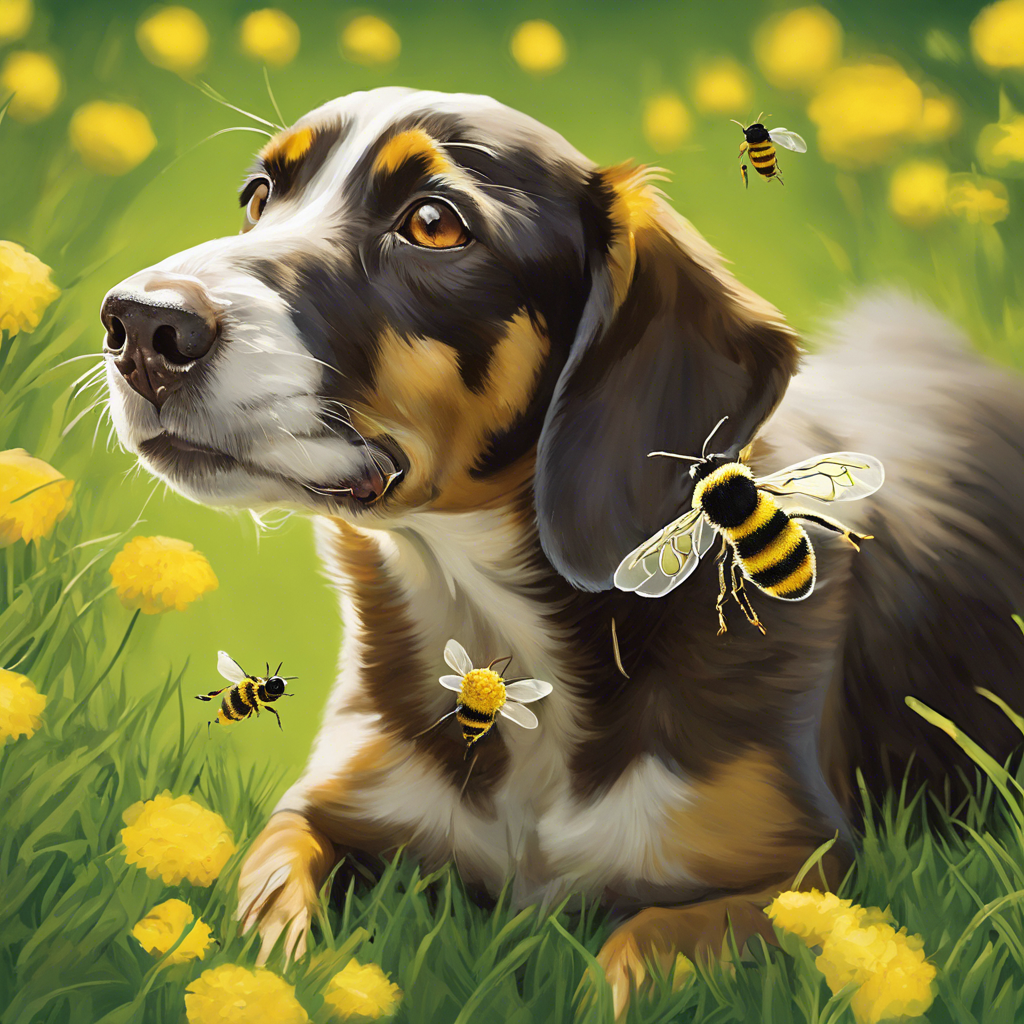As pet owners, we often find ourselves marveling at the peculiar behaviors of our furry companions. One particularly odd scenario that may arise is the sight of a dog munching on an unexpected snack: a bee. While this might seem unusual, it is not an entirely rare occurrence and can evoke a mixture of concern and amusement. However, beneath the light-hearted nature of this incident lies a plethora of biological and behavioral intricacies worth exploring. In this blog post, we will delve into why dogs might eat bees, the potential consequences of such an act, and what pet owners should know to keep their animals safe.

Dogs’ Innate Curiosity
Dogs are naturally curious creatures, and this curiosity drives them to explore the world around them with their mouths. It is not unusual for a dog to nibble on various objects, from sticks to insects. This curiosity can be attributed to their ancestors, who were scavengers and hunters. In their quest for food and sensory stimulation, dogs have retained a keen interest in exploring the smallest details of their environment. This includes investigating creatures like bees, captivated by their movement and vibrant colors.
Moreover, dogs have highly developed senses that allow them to smell and taste things in ways we cannot comprehend. Their sense of smell is estimated to be between 10,000 to 100,000 times more acute than that of humans. This heightened olfactory ability can lead dogs to perceive bees as a novel and intriguing snack, especially when they are abundant in warmer months.
The Role of Playfulness
In addition to curiosity, playfulness is a significant part of a dog’s behavior. Many breeds, especially younger dogs, can exhibit a playful demeanor that drives them to chase and “play” with insects like bees. The erratic movements of these bees can resemble a moving toy, tempting the dog to engage with it. However, a playful bite can quickly escalate to an unintended consumption, resulting in an unexpected chase for the bee and the rest of the environment involved.
Is It Safe for Dogs to Eat Bees?
While a dog eating a bee might seem harmless at first glance, there are several considerations pet owners should be aware of. Firstly, bees are not toxic to dogs, meaning that ingestion does not generally result in poisoning. However, an allergic reaction is a significant risk that cannot be overlooked, depending on the individual dog’s sensitivity to bee stings or the bee’s venom.
Potential Risks
- Allergic Reactions: Just as humans can suffer from allergic reactions to bee stings, dogs can too. Symptoms of an allergic reaction in dogs may include swelling around the face or paws, difficulty breathing, hives, vomiting, or diarrhea. In severe cases, anaphylaxis can occur, necessitating immediate veterinary attention.
- Bee Stings: If a dog bites a bee and is stung in the process, the sting can inject venom, causing localized pain and swelling. The area may become red and irritated, and depending on the dog’s sensitivity, this may require medical intervention.
- Gastrointestinal Issues: Consuming bees could lead to digestive upset. While the dog may successfully swallow the bee without immediate issue, some dogs might experience vomiting or diarrhea following the incident due to the bee’s chitinous exoskeleton, which is difficult for their digestive systems to break down.
- Parasites: Occasionally, bees may host parasites or be contaminated with pesticides which could pose additional risks when ingested.
What Pet Owners Should Do
If you witness your dog eating a bee, there are some steps you can take to ensure your pet’s safety:
- Monitor for Symptoms: After a bee has been ingested, observe your dog for any concerning symptoms. Look out for signs of allergic reactions like swelling, hives, or difficulty breathing. If any of these occur, contact your veterinarian immediately.
- Check the Mouth: Examine your dog’s mouth for any signs of a sting. If you see swelling or irritation, it may be necessary to seek veterinary help.
- Stay Calm: Dogs can pick up on our emotions, so if you react with panic, your dog may become anxious. Calmly assess the situation to prevent causing stress to your pet.
- Prevent Future Occurrences: If your dog has a penchant for catching insects, consider training them to avoid certain creatures. Positive reinforcement can aid in teaching your dog which insects to ignore.
Conclusion
While the image of a dog snacking on a bee is undoubtedly amusing, it serves as a reminder of the complex interplay of curiosity and instinct that defines canine behavior. Understanding why dogs may partake in such strange diets arms pet owners with the knowledge they need to ensure their pets remain safe during such encounters. As always, being informed about the risks associated with bee encounters and knowing how to react can make a difference in maintaining your dog’s health and happiness. With proper care and an awareness of their behaviors, you can enjoy the delightful quirks of your dog while minimizing potential risks.